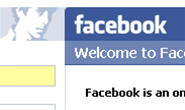
While Facebook’s update caused its users to join petitioning groups on its site against the new design, with some groups amounting to over 200,000 members, the firm has largely ignored user criticism.
But Microsoft's Hotmail, in response to over 2,000 users posting complaints against its updated look and features, issued a statement promising to investigate the problems and remedy the situation as soon as possible.
In a blog the email provider listed ways in which it would answer user demands, such as it promised more themes and an increase in the default number of messages users can see per screen.
So, why have these two firms responded differently to user reactions?
IDC research analyst Caroline Dangson, said one of the main reasons is because of the nature of the complaints.
Firstly, most of the user complaints to Hotmail are technical and therefore demand rectification, while Facebook users were most concerned with the new layout.
According to the Hotmail user postings, they have had trouble accessing their folders and emails, and have had difficulty forwarding and replying to messages. Other Hotmail users complain the new design does not sit well with their screen size - one of the customer problems Hotmail said it is working on; promising to give inboxes more space to satisfy users with smaller monitors.
But Dangson also pointed out Hotmail has the potential to loose more business than Facebook from its redesign.
A recent survey IDC conducted found around one third of Hotmail users also use Yahoo and 40 per cent also use Gmail accounts, Dangson said.
“If Hotmail chose to ignore user feedback, it risks a large number of users jumping ship,” she added.
This contrasts to angry Facebook users generally staying put and what is more, increasing interaction with the site by joining Facebook groups, she suggested.
Additionally, Hotmail’s cooperate nature could be an attempt to offer an olive branch to users, after its strict decision not to give them a choice to revert back to its old design.
When Hotmail previously made updates, it had kept both old and new versions of the sites going for a while, which users could switch between at a click of a button, Dangson explained.
In contrast, Facebook’s latest update gave users a choice between a new site design and their old version. Therefore the firm could argue it had showed consideration by slowly easing users into its new layout.
“Users need a choice between old and new because so much of what draws them in to web communication sites is habit,” Dangson said.
“Also, a new way of using something is less efficient and therefore makes users angry if they are forced to update when they don’t have time.”
“There is no perfect solution for updating free web communication services but it must be gradual, the firms must notify users beforehand and make sure they have some kind of choice in the matter,” she added.
To further illustrate her point, Dangson pointed to Hotmail competitor Yahoo allowing users to test out its new homepage, My Yahoo, at the same time as keeping the traditional interface.
“And it is much less problematic changing a homepage than an email because email pages are so much more personal,” noted Dangson
“It is perhaps ironic that consumers get so annoyed at these updates when these sites are free but it is because of the amount of time people have invested,” she concluded.




.png&h=140&w=231&c=1&s=0)





 iTnews Executive Retreat - Security Leaders Edition
iTnews Executive Retreat - Security Leaders Edition












_(1).jpg&h=140&w=231&c=1&s=0)



